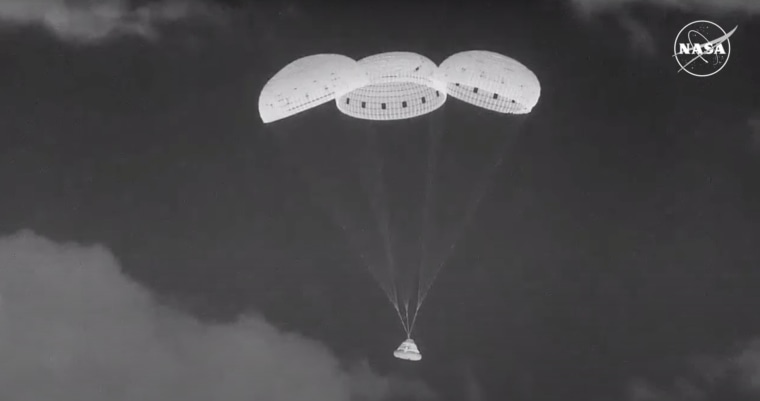
2024-09-07 16:00:02
After a summer of turmoil, Boeing’s Starliner spacecraft is finally home.
The capsule undocked from the International Space Station without astronauts onboard on Friday at 6:04 p.m. ET, then spent roughly six hours flying back to Earth. Starliner successfully touched down at New Mexico’s White Sands Space Harbor at 12:01 a.m. ET.
NASA footage showed the capsule streaking across the night sky before two sets of parachutes opened to slow it down. Six landing airbags were also deployed underneath the spacecraft to cushion its landing.
For Boeing, the Starliner’s successful return was likely bittersweet. Its smooth journey back suggests that the two NASA astronauts it carried to the space station could probably have flown home safely on the spacecraft. But problems with Starliner’s thrusters and leaking helium, both detected soon after it launched, led the agency’s top officials to decide to call on SpaceX for the return flight instead.
“It’s important to remember this was a test mission,” Joel Montalbano, NASA’s deputy associate administrator for space operations, said at a news conference early Saturday after Starliner had landed.

Starliner launched NASA astronauts Butch Wilmore and Suni Williams to space in early June on the capsule’s first crewed test flight — a mission expected to last around eight days. But the Starliner then remained parked at the space station for months as engineers on the ground assessed how to safely bring it back to Earth.
After weeks of tests and analysis, NASA determined that the capsule’s propulsion system appeared stable, but the thruster issues posed too much of a risk for Starliner to return with a crew. Wilmore and Williams will remain on the space station into the new year then fly back in February on a SpaceX capsule.
The two astronauts were on hand to help with Starliner’s departure, which took place as the space station was flying 260 miles over central China.
“We have your backs, and you’ve got this,” Williams radioed to mission controllers at NASA’s Johnson Space Center in Houston. “Bring her back to Earth. Good luck.”
The return journey was closely watched, as it marked the end of a dramatic few months for Boeing and NASA. The test flight was meant to demonstrate that the spacecraft could reliably ferry astronauts to and from low-Earth orbit, thereby paving the way for NASA to certify Boeing to conduct regular trips to the space station.
Instead, the thruster issues became the latest major setback for Boeing’s Starliner program, which even before the launch was more than $1.5 billion over budget and years behind schedule. An uncrewed test flight to the space station, which NASA required of Boeing before its spacecraft could carry astronauts, also went awry the first time, and the company had to repeat it in 2022.



